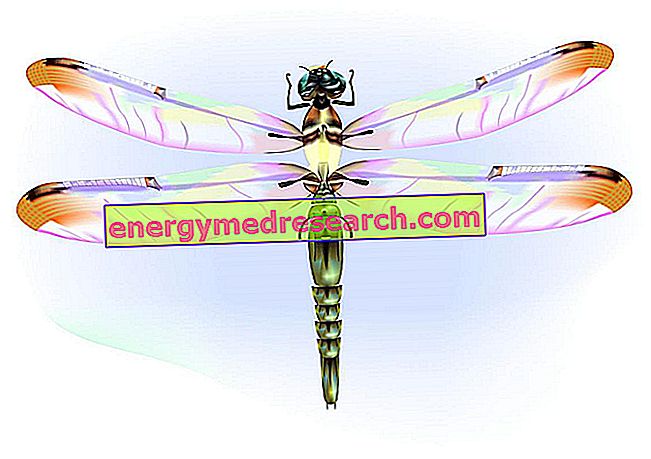Vaccine prophylaxis
It is possible to ensure a certain immunity from infections sustained by the Papilloma virus by undergoing a prophylactic vaccination: the vaccines, presenting to the immune system capsid of the pathogen devoid of viral genetic products (therefore empty), are an excellent weapon of defense against Papilloma viruses, especially for young women. As can be easily understood, this vaccine cannot prevent diseases other than the specific papilloma virus against which it exercises its action.
Do not forget, however, that the vaccine turns out to be totally ineffective if taken AFTER having contracted the virus. On the other hand, according to recent scientific evidence, the quadrivalent vaccine seems effective not only in preventing primary infection, but also in significantly reducing the appearance of relapses in women with a history of previous cervical lesions.
Step back to understand ...
The Papilloma Virus is involved both in the manifestation of benign hyperproliferative lesions, of negligible and simple resolution (such as warts and condylomata acuminata), and in the development of malignant tumor cells, whose preferential target is the cells of the cervix . Vaccination is therefore indicated precisely to hinder the entry of the Papilloma virus into the body's cells.
Cervical cancer
Much has been said and written about the preventive measures to be followed to protect against Papilloma virus infections; we are now trying to focus on HPV vaccination.
The propaganda concerning the vaccination against the Papilloma virus, which the medical class has excellently developed, aims to make the general population - and young women in particular - aware of the risks that can derive from a virus infection HPV, in particular if supported by genotypes 6, 11, 16 or 18 (the last two ascribed to a high oncogenic risk).
Before starting to go deeper into the topic, we report two puzzling data:
- in Italy over 3, 000 new cases of cervical cancer are diagnosed annually, of which 40-50% are deadly.
- Papilloma virus infection, contracted through sexual relations with infected partners, is the cause of more than 90% of diagnosed cases of cervical cancer; serotypes 16 and 18, in particular, are responsible for only 70% of cases diagnosed with cervical cancer
- HPV serotypes 6 and 11 alone cause about 90% of genital warts.
Anti-HPV vaccine
X Problems with video playback? Reload from YouTube Go to Video Page Go to Wellness Destination Watch the video on youtubeAnti HPV vaccine
Only a few years ago, in the very recent 2006, EMEA (European Medicines Agency) and AIFA (Italian Medicines Agency) authorized the vaccination against the Papilloma Virus, the first that promises excellent (though not absolute) protection from neck cancer of the HPV-dependent uterus: the non-obligatory vaccine against Papilloma virus infections is free for girls who are 12 years of age or older. Indeed, the vaccine renders immune both from type 6, 11, 16 and 18 Papilloma virus infections and from the lesions they cause.
The HPV vaccine exerts its effectiveness to the maximum not only among the very young (as is often customary to believe) but also among women aged between 26 and 45; on the other hand, the mechanisms that regulate the immune system are almost identical in all ages (clearly, in the absence of alterations of the immune system).
The best age to undergo vaccination is still the subject of heated debate, as many and varied are the authors' theories: some believe that the vaccine should be administered within 9 to 11 years, therefore before the start of sexual activity. In fact, as we know, the Papilloma virus can be transmitted almost exclusively through sexual intercourse; therefore, the effectiveness of the vaccine would be canceled if taken after having already contracted the virus. However, other researchers believe that girls can undergo vaccination even at the age of 16, up to the age of 25, when the woman should begin to undergo regular routine gynecological examinations (PAP test) every three years.
According to the thought of others, vaccinating a child against Papilloma virus already at the age of 9 could be seen as a kind of stimulus or invitation to start sex life early.
How the vaccine works
Numerous studies have been conducted on different Papilloma Virus vaccines:
- monovalent vaccines (against HPV 16)
- bivalent vaccines (against HPV 16 and 18: eg Cervarix)
- quadrivalent vaccines (against HPV 6, 11, 16 and 18: eg Gardasil and Silgard): Gardasil appears to be particularly suitable for women aged between 16 and 26, as well as girls and adolescents between 9 and 15 years.
- 9-valent vaccines (against HPV 6, 11, 16, 18, 31, 33, 45, 52 and 58: eg Gardasil-9)
Comparing these different types of vaccines, it has been observed that the most effective of all is the one that exercises its protective action both towards the 2 serotypes most involved in cancerous lesions of the cervix (HPV 16 and 18), and towards the 2 serum-types most involved in the appearance of acuminate condylomas (HPV 6 and 11).
The quadrivalent anti-Papilloma Virus vaccine protects against high-grade dysplastic lesions of the vulva, from damage to the external genitals (eg condylomata acuminata), from high-grade dysplasia at the level of the cervix and from carcinoma of the neck of the uterus. The preventive efficacy of the quadrivalent vaccine against the male has not yet been fully demonstrated.
In the case of bivalent vaccine, protection is instead limited to precancerous lesions (abnormal cell proliferation) and cervical carcinoma.
Composition of the vaccine
The HPV vaccine is composed of viral-like particles, known precisely as Virus-like Particles or more simply VLP, associated with adjuvant substances (a compound formulated with aluminum, capable of stimulating a better response).
The proteins contained in the capsid are known as L1: the vaccine contains purified L1 proteins (produced with the recombinant DNA technique) for each of the types of human papilloma virus contained in the drug.
After the vaccine has been administered, the woman's immune system starts producing antibodies against these proteins: in the event of a possible Papilloma virus attack, the body immediately recognizes pathogenic cells and prevents the virus from causing damage.
Future hopes and expectations
The HPV vaccine is used exclusively for prophylactic purposes, in the sense that the drug does NOT act if the woman has already contracted the virus.
However, doctors are mobilizing to achieve another goal: therapeutic vaccination . The hopes are to produce a vaccine that can stop the progression of the infection even after having contracted the Papilloma virus. In other words, therapeutic vaccination could prevent the possible malignant progression of cervical cells, previously infected by Papilloma visus.
Currently, the effectiveness of this particular vaccination against the Papilloma Virus is still being tested.
Posology and administration
The vaccine should be administered intramuscularly in the shoulder muscle (deltoid); the therapy involves a three-dose cycle: the second dose should be taken two months after the first, while the third dose should be administered 4 months after the second. Alternatively, it is possible to submit to reminders, respectively 30 and 90 days after the first appointment.
The vaccine should NOT be given to pregnant women: just think that the FDA reported 28 cases of miscarriage after taking the Papilloma virus vaccine in pregnant women.
The drug is not recommended for women allergic to one or more excipients contained in the vaccine.
Adverse effects
Like any drug, even the HPV vaccine can cause unpleasant side effects, which can be quickly resolved; among the most widespread, we mention: fever and redness / irritation / pain at the point of injection of the drug.
Even after the HPV vaccination, it is recommended that sexually active women undergo regular PAP tests, to identify, possibly and well in advance, possible attacks by the Papilloma virus. In fact, vaccination greatly reduces the risk of developing precancerous lesions of the cervix, but statistically speaking it does not offer absolute protection.



